The Culture of Women in Music
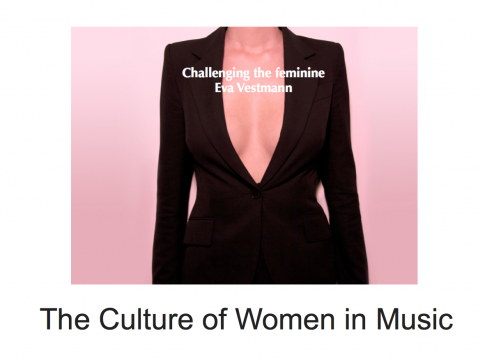
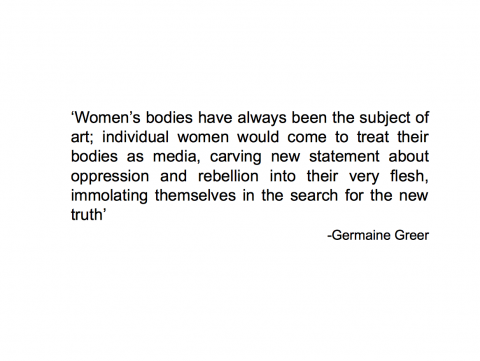
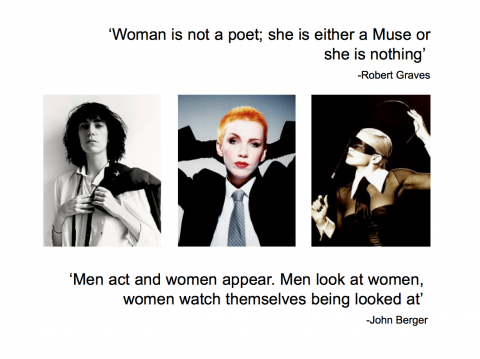
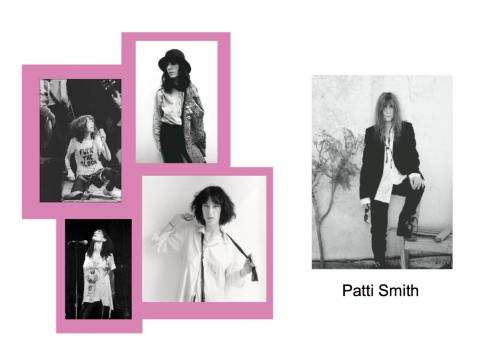
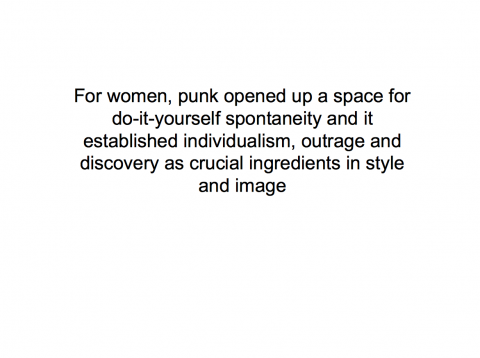
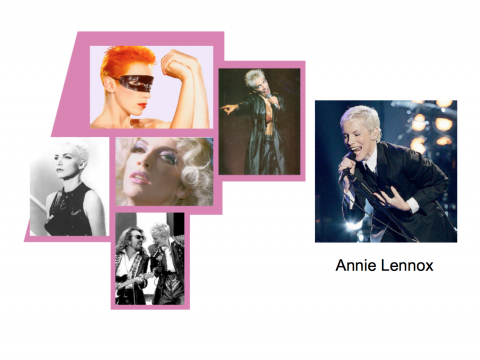
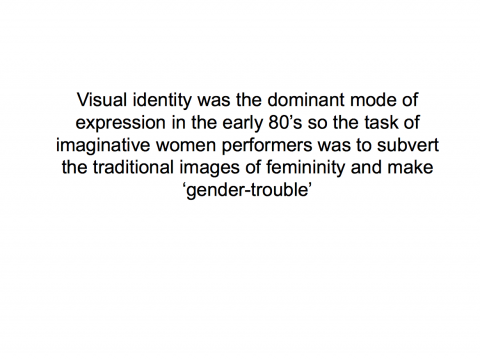
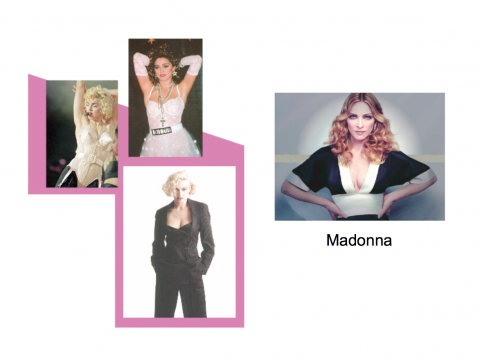
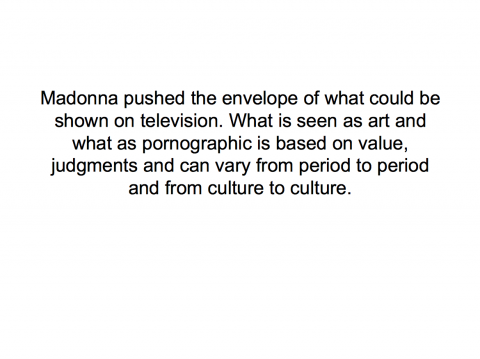
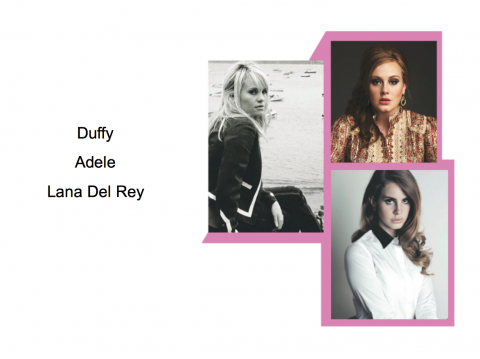
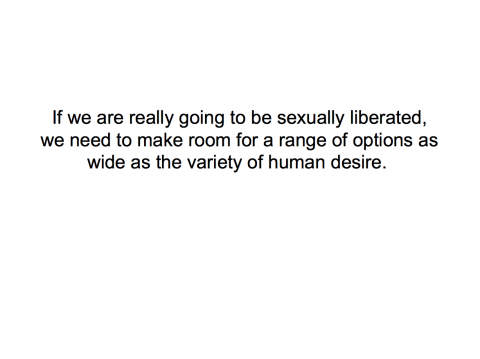
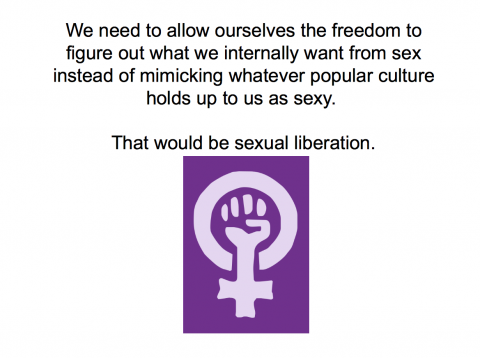
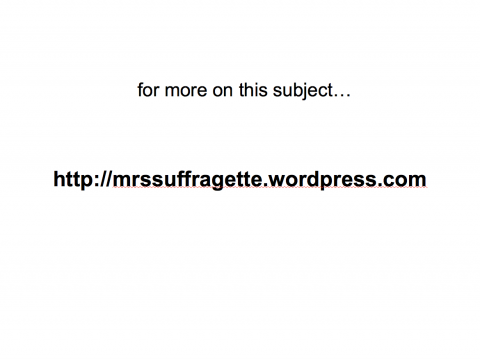
Pecha Kucha Presentation 18th January 2012
The Culture of Women in Music
Eva Vestmann
The female form has always affected us humans, from when we started to make art, up until today. Looking at how women are portrayed in art, adverts, politics and music and contemplating the effect it has on society has always been a fascinating subject to me.
In my dissertation I based my research around three women in the music industry; Patti Smith, Annie Lennox and Madonna. I chose these women because of their artistic and commercial success, they are all a huge influence on their next generation and all of them have opened different doors for women. For my analysis I wanted to situate them within social and historical context by taking into account the changing debates in feminism and politics in issues surrounding sexuality, equality, identity and androgyny.
Women’s liberation movement (in the 60’s) was associated with the freedom of women to express themselves. Women’s position in the scheme of 60’s rebel rock was very shaky; to be feminine signified domesticity, and women’s choices were limited to the mistress or the muse. In punk, women felt free to express difference. In a symbolic sense, women were cutting and destroying the established image of femininity.
Patti Smith soon became a symbol of defiance and sexual liberation, both the peacemaker and the rule-breaker. With this powerful androgynous sexuality she was presenting, she was restoring a meaning to sexuality, that sexuality can be a rebellious act. She is a magnificent messenger of freedom, expression of real life and existence. She changed the boundaries of what a rock song could actually be by fusing together rock and poetry.
Clearly punk paved the way for more women in the 80’s to explore more explicit representation, so by playing with androgyny and wearing a mans suit Annie Lennox was questioning gendered identity, playing down her femininity and gaining more power. Her suit and her chopped hair, can be interpreted as a statement of business, a female artistic control. As a woman, wearing a male suit masked her femininity but, rather than constructing a denial of her identity, it was an assertion of autonomy.
Although image has always been important in popular music, not least in live performance, the advent of cable television provided a new outlet for marketing bands and artists. When the channel MTV emerged, visual identity became dominant mode of expression in the early 80’s so the task of imaginative women performers was, to subvert the traditional images of femininity and make ‘gender-trouble’
Madonna pushed the envelope of what could be shown on television. Her early career suggest more flirtation with gender politics and engages with both feminist acclaim and condemnation while her self-conscious statements of her later videos are very confrontational and obviously from a mind of a woman who is fully aware of the politics of gender.
But what is seen as art and what as pornographic is based on value, judgments and can vary from period to period and from culture to culture. Notions of the pornographic are inflected by class, gender, race and generation and are intimately intertwined with shifting taboo zones. Rather than arguing against the existence of porn, we should look for more equality within a world already saturated by pornography. Of course not all female singers in pop culture today are portraying themselves as a commercial product. In fact I believe young women are educating themselves and embracing the past when I see new artists such as Duffy or Adele, who are seeking inspiration to the female music idols of the 50’s, the newest example is Lana Del Ray.
‘Women’s liberation and empowerment are terms feminists started using to talk about casting off the limitations imposed upon women and demanding equality. The freedom to be sexually provocative or promiscuous is not enough freedom; it is not the only “women’s issue” worth paying attention to. And we are not even free in the sexual arena.
If we are really going to be sexually liberated, we need to make room for a range of options as wide as the variety of human desire. We need to allow ourselves the freedom to figure out what we internally want from sex instead of mimicking whatever popular culture holds up to us as sexy. That would be sexual liberation.


